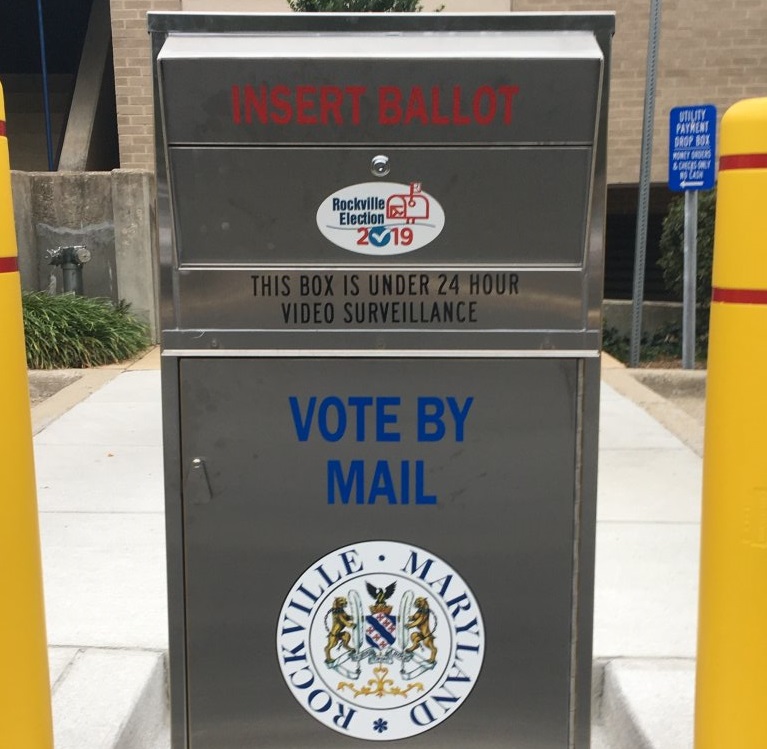Mileah Kromer: Promoting Mail-in Ballots Together

Gov. Larry Hogan’s decision to forgo a universal mail-in election, like the one he ordered for the June 2 primary, was met with swift and sustained backlash from election administrators, public advocacy organizations and Democratic leaders. They assert that his directive to mail every voter an application for a ballot rather than the ballot itself will result in additional costs upwards of $20 million dollars and the unnecessary exposure of in-person voters to COVID-19.
Mr. Hogan maintains that the combination of in-person voting, mailing applications for the state’s no-excuse absentee ballots, and encouraging absentee and off-peak in-person voting provides for a convenient and safe election this November. He has also criticized the State Board of Elections for both their administration of the recent primary election and, more recently, failure to mail the ballot applications.
I’m among those who support universal mail-in ballots for the upcoming election. We’re in the middle of a pandemic and election experts, like the non-partisan Maryland Association of Election Officials, conclude that it’s the most cost-effective way to steer voters to the safety of their mailboxes and away from potentially crowded in-person polling places.

Mileah Kromer
Recent political science research suggests that universal mail-ins can even increase voter turnout without aiding one party over another. And despite tenuous claims to the contrary, there’s no evidence of widespread voter fraud as a result of mail-in balloting.
But disagreements over the best way to administer this election aside, proponents of universal mail-ins and supporters of the governor’s plan can still work toward a single goal: A general election in Maryland where most votes are cast by mail and in large numbers.
To do so, all our elected officials, civic leaders and engaged citizens must relentlessly encourage voters to apply for a mail-in ballot both immediately and online. This will help ease the administrative burden on State Board of Elections staff as they process the large influx of mail-in ballot applications. Indeed, a steady stream of ballot requests starting today are more manageable than a flood at the late-October deadline and online submissions are easier to process than paper applications.
Further, while the impending move from precinct-level polling locations to fewer but larger voting centers was a pragmatic decision given the dwindling staff of election judges, it also adds another layer of change for voters. To really flatten the ballot curve, we can’t just fight against mail-in procrastination. We also need any in-person voter who is able to adopt the mail-in model.
The Maryland Democratic Party and its legislative and county leaders have already started to promote mail-in ballots. For example, House Speaker Adrienne Jones created a step-by-step video guide on how to use the ballot request form; it’s pitch-perfect for Marylanders who need a little help navigating online systems. They should continue and coordinate their efforts to amplify the message; a single local lawmaker can’t reach a significant number of voters but the collective most certainly can.
The governor’s communications team has also begun encouraging voters to request mail-in ballots via their social media accounts. And there’s a lot more that can be done over the next few months given the governor’s significant platform and access to statewide media. Mr. Hogan’s advocacy organization An America United could even fund statewide ads promoting the mail-in ballot process.
The Maryland GOP and its elected officials also have an important role to play. They need to urge their constituents, particularly conservatives who are more wary about vote-by-mail, to embrace the same mail-in option that the Maryland Senate Republican Caucus advocated for in their June 25 letter to Gov. Hogan.
A failure to promote the mail-in ballot process will almost certainly result in a self-inflicted participatory disparity Republicans can hardly afford in Maryland. They need only look to the recent Virginia primary where twice as many Democrats applied for an absentee ballot as their Republican counterparts as an example.
There’s still a little time left for Mr. Hogan to change his mind on universal mail-in ballots. If he does, all the efforts mentioned above could refocus on notifying voters when the ballot is coming and the deadline for mailing it in. In the real likelihood that he doesn’t, after the last votes are counted there will be clear data to evaluate his decision.
Regardless, we need to promote mail-ins together to execute the election Marylanders deserve this fall. So, tell your friends to request their ballots at www.elections.maryland.gov sooner rather than later.
— MILEAH KROMER
The writer is the director of the Sarah T. Hughes Field Politics Center at Goucher College, which conducts the Goucher Poll. She is also an associate professor of political science. Her email is [email protected]; Twitter: @mileahkromer.




 Creative Commons Attribution
Creative Commons Attribution